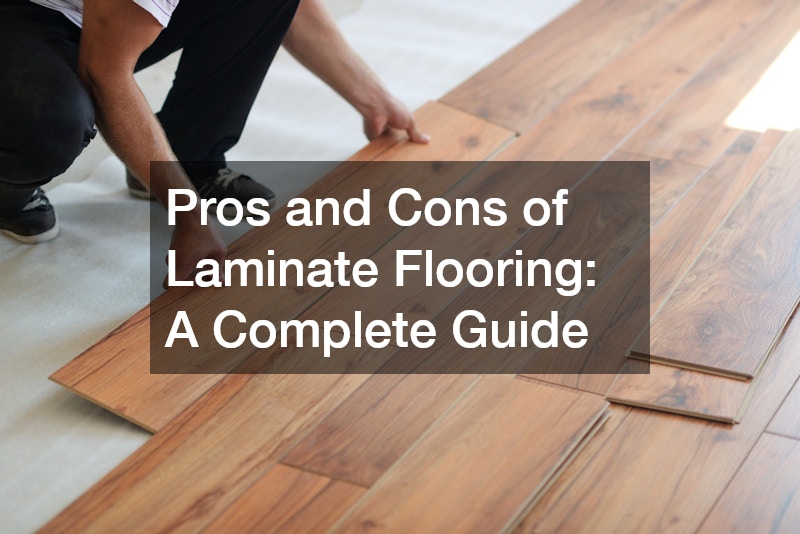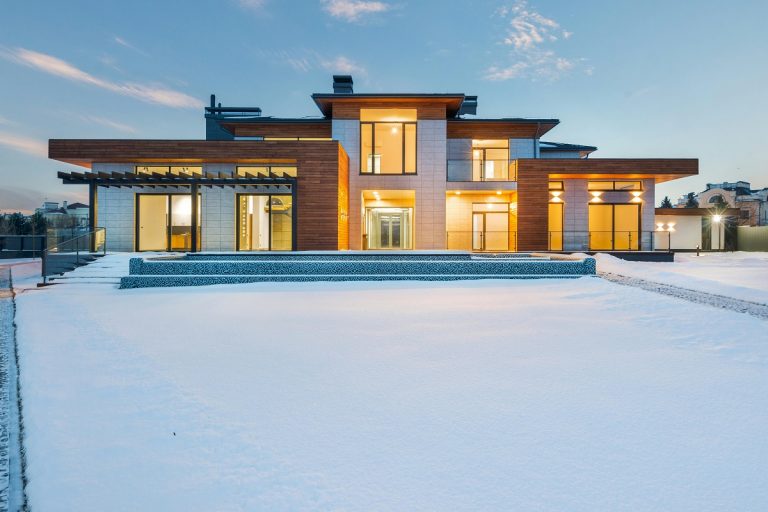

Laminate flooring has been a popular choice among homeowners for decades, and for good reason. It offers the look of real wood or stone without the high price tag and can be installed quickly, even as a DIY project. However, like any flooring option, laminate has its pros and cons.
Whether you’re renovating your living room, updating a bedroom, or considering a basement makeover, it’s important to understand exactly what you’re getting with laminate. This guide will walk you through the benefits, drawbacks, costs, and maintenance needs so you can make the right choice for your home.
We’ll also touch on how laminate compares to other options, like in the ongoing debate of laminate vs vinyl flooring, so you’ll have a complete picture before deciding.
What is Laminate Flooring?
Laminate flooring is a multi-layer synthetic floor covering designed to mimic the appearance of hardwood, stone, or tile. It’s typically made of four main layers:
- Wear layer: A transparent protective topcoat that resists scratches, stains, and fading.
- Design layer: A high-resolution printed image that gives the floor its realistic look.
- Core layer: Usually made of high-density fiberboard (HDF) for stability and strength.
- Backing layer: Provides moisture resistance and prevents warping.
Laminate is usually installed as a floating floor, meaning the planks click together and rest on top of an underlayment without being nailed or glued down.
The Pros of Laminate Flooring
1. Affordable Price Point
Laminate is generally more budget-friendly than hardwood or stone, making it an excellent choice for homeowners who want style without overspending. You can often get high-quality laminate for $1 to $5 per square foot, plus installation costs if you’re not doing it yourself.
2. Wide Range of Styles
Laminate can mimic everything from exotic hardwoods to natural slate tiles, with options for different colors, patterns, and finishes. This makes it easy to match any interior design style, from modern minimalism to rustic farmhouse.
3. DIY-Friendly Installation
The click-lock installation system means most homeowners can install laminate without hiring a professional. It’s a great weekend project if you have basic tools and some patience.
4. Durability Against Daily Wear
The protective wear layer makes laminate resistant to scratches, dents, and stains. It’s especially good for households with kids or pets.
5. Low Maintenance
Regular sweeping or vacuuming and the occasional damp mop are usually all you need to keep laminate looking fresh. No special cleaners or polishes are required.
The Cons of Laminate Flooring
1. Not Fully Waterproof
While laminate can resist small spills if cleaned quickly, it’s not waterproof. Standing water or high humidity can cause the planks to swell or warp.
2. Hard Underfoot
Unlike vinyl or cork flooring, laminate doesn’t have much cushioning. You can add underlayment for extra comfort, but it will never be as soft as some other flooring options.
3. Can’t Be Refinished
Unlike hardwood, you can’t sand and refinish laminate. Once it’s worn out, damaged, or outdated, it has to be replaced.
4. Sound Transmission
Laminate can be noisy when walked on, especially in high heels or with pet nails. An underlayment can reduce the noise but won’t eliminate it entirely.
5. Lower Resale Value Than Hardwood
While laminate can boost your home’s look, it usually doesn’t increase resale value the way real hardwood floors do.
Where Laminate Flooring Works Best
Laminate is a great fit for:
- Living rooms – Stylish and easy to maintain.
- Bedrooms – Comfortable and cozy under rugs.
- Hallways – Durable against heavy foot traffic.
- Home offices – Clean look that works with most décor.
Avoid using it in bathrooms, laundry rooms, or other high-moisture areas unless you choose a water-resistant laminate specifically designed for these spaces.
Laminate vs Other Flooring Types
Laminate vs Vinyl Flooring
Both laminate and vinyl are affordable and stylish alternatives to hardwood, but vinyl is more water-resistant, making it better for bathrooms and kitchens. Laminate tends to feel more like real wood underfoot and may have a more realistic texture, but it’s less tolerant of moisture.
Laminate vs Hardwood
Hardwood has a timeless look and can be refinished multiple times, but it’s more expensive and requires more maintenance. Laminate offers a similar appearance at a lower price point but won’t last as long.
Laminate vs Tile
Tile is great for moisture resistance but can feel cold and hard underfoot. Laminate is warmer and faster to install, but not as waterproof.
Installation Process
Laminate flooring is popular among DIY enthusiasts because of its click-lock system. Here’s what the process looks like:
- Preparation: Ensure the subfloor is clean, dry, and level.
- Underlayment: Lay down an underlayment for cushioning, sound absorption, and moisture resistance.
- Plank Installation: Connect planks using the tongue-and-groove system, staggering seams for a natural look.
- Finishing Touches: Add baseboards or trim to cover expansion gaps.
While DIY installation can save money, hiring a professional ensures perfect seams and long-lasting results.
Maintenance and Cleaning Tips
Laminate flooring is easy to care for, but a few habits will keep it looking great:
- Sweep or vacuum regularly to prevent dirt from scratching the surface.
- Clean up spills right away to avoid water damage.
- Use a damp (not wet) mop for deeper cleaning.
- Place mats at entrances to catch dirt and grit.
- Use felt pads under furniture to prevent dents and scratches.
Cost Breakdown
The total cost for laminate flooring depends on material quality, brand, and installation method. On average:
- Materials: $1–$5 per sq. ft. for mid-range options.
- Installation: $2–$5 per sq. ft. if hired out.
- Underlayment: $0.30–$0.75 per sq. ft.
DIY installation can significantly reduce the overall cost, but factor in the time and tools required.
Pros and Cons Summary Table
| Pros | Cons |
| Affordable | Not waterproof |
| Many styles available | Hard underfoot |
| DIY-friendly installation | Can’t be refinished |
| Durable and scratch-resistant | Noisy without underlayment |
| Low maintenance | Lower resale value than hardwood |
Environmental Considerations
Many modern laminate products are made using eco-friendly practices and low-VOC adhesives. Look for certifications like FloorScore or GreenGuard if indoor air quality is a concern. Recycling old laminate can be tricky, but some facilities accept it.
When to Choose Laminate Flooring
Laminate is ideal if you want:
- The look of wood without the cost.
- A quick and easy installation.
- Durability for high-traffic areas.
- Low-maintenance upkeep.
Avoid laminate if your home has frequent moisture issues or if you want a floor that can be refinished multiple times.
Final Thoughts
Laminate flooring offers a winning combination of style, durability, and affordability. While it’s not the perfect choice for every room—especially moisture-heavy spaces—it works wonderfully in most living areas. If you’re comparing options, remember that in the laminate vs vinyl flooring debate, vinyl takes the lead in waterproofing, but laminate often wins in realistic texture and warmth.
By weighing the pros and cons carefully, you can choose flooring that suits both your lifestyle and your budget.








